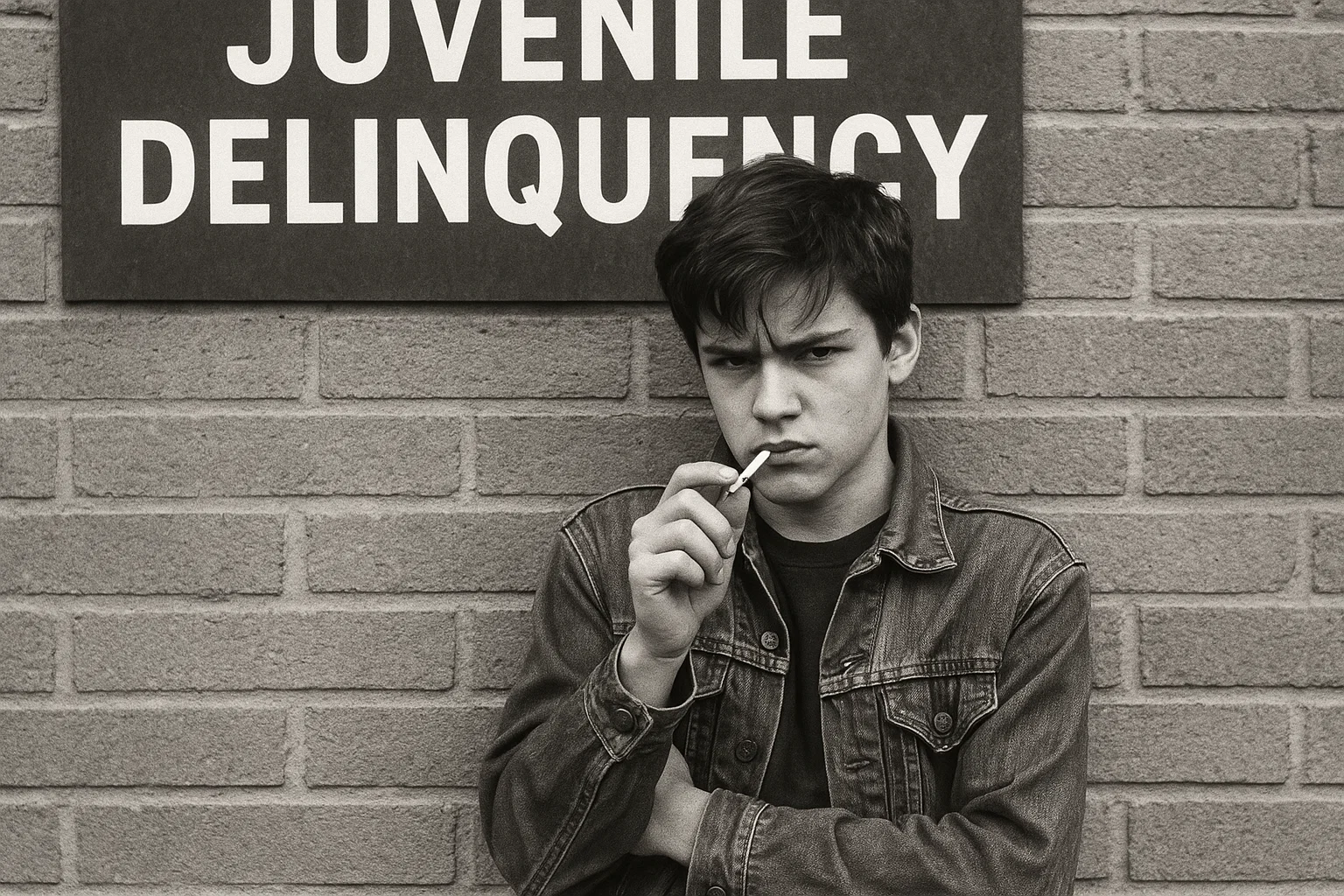6.1 What is Juvenile Delinquency?
Juvenile delinquency refers to criminal or antisocial behavior carried out by individuals who are under the age of legal adulthood, usually between 10 to 18 years old, depending on the jurisdiction. These are not just kids being mischievous; they are minors committing offenses that, if done by adults, would be considered crimes. These behaviors can include theft, vandalism, assault, drug use, truancy, and more serious offenses like armed robbery or even homicide.
Unlike adult crime, juvenile delinquency often comes from a complex mix of personal, social, and environmental factors. Children and teens are still developing mentally and emotionally, and many lack the judgment, self-control, and foresight of adults. That’s why most legal systems treat juvenile offenders differently—focusing more on rehabilitation than punishment.
Juvenile delinquency isn’t just about breaking the law; it’s a red flag—a sign that something deeper is going on. Maybe it’s a broken home, abuse, neglect, poverty, peer pressure, or untreated mental health issues. Sometimes, it’s just a lack of structure or supervision. Unfortunately, if ignored, minor infractions can snowball into a lifelong pattern of criminal behavior.
Some juvenile crimes are status offenses, meaning they are only considered offenses because of the person’s age. These include underage drinking, curfew violations, and truancy. These may seem minor, but they can lead to police involvement, school discipline, or entry into the juvenile justice system.
Understanding juvenile delinquency is key to breaking the cycle of crime before it begins. It’s about identifying at-risk youth early and offering them alternatives—counseling, mentorship, education, and job training. It also means addressing systemic issues like poverty, racism, and failing schools that push young people toward delinquency.
Juvenile delinquency is a mirror reflecting the failures of family, community, and society. By addressing its root causes, we don’t just save individuals—we create safer, more equitable communities for all.
6.2 Causes of Juvenile Delinquency
So, what causes a child to turn to crime? It’s rarely just one thing. Juvenile delinquency stems from a mix of personal vulnerabilities and environmental pressures. Let’s look at the key contributors:
1. Family Problems:
Broken homes, neglect, domestic violence, and parental substance abuse can have a devastating impact on a child’s emotional development. Children mimic what they see. If they grow up around crime, they might believe it’s normal or necessary for survival.
2. Poor Parenting:
Lack of supervision, inconsistent discipline, or over-punishment can cause resentment and rebellion. On the flip side, overindulgence without accountability can also lead to entitlement and law-breaking.
3. Peer Pressure and Gangs:
During adolescence, peer approval becomes critical. Young people may commit crimes to gain status, acceptance, or protection within a group—especially in gang-influenced areas.
4. Socioeconomic Conditions:
Poverty limits access to quality education, healthcare, and job opportunities. In such conditions, crime can appear to be the only path to success or even basic survival.
5. School Failure:
Failing academically or experiencing bullying and alienation at school can push students toward delinquent behaviors. A negative school experience makes crime and delinquency seem like more viable options.
6. Substance Abuse:
Drugs and alcohol impair judgment and lower inhibitions. A teen under the influence is more likely to engage in risky or illegal behavior.
7. Media Influence:
Glorification of crime in music, movies, and video games can desensitize youth to violence and reinforce harmful stereotypes or criminal lifestyles.
8. Mental Health Issues:
Undiagnosed or untreated disorders like ADHD, depression, and conduct disorders are strongly linked to youth offending. Without proper support, these conditions can escalate into dangerous behavior.
The more risk factors a child faces, the higher the likelihood they will become involved in criminal activity. But these aren’t excuses—they’re explanations. Understanding them helps us design better prevention strategies and support systems to guide kids onto healthier paths.
6.3 Juvenile Justice System: Rehabilitation vs. Punishment
The juvenile justice system is built on a fundamentally different philosophy than the adult system. While adult criminal justice emphasizes punishment and deterrence, the juvenile system focuses on rehabilitation, education, and reintegration into society.
Here’s why: minors are considered less culpable than adults because their brains are still developing. Science shows that the parts of the brain responsible for decision-making, impulse control, and moral reasoning don’t fully mature until the mid-20s. That means teens often act on emotion rather than logic—and they’re much more capable of change.
Most juvenile justice systems aim to provide interventions that help youth recognize their mistakes and turn their lives around. This can include:
- Counseling and therapy
- Substance abuse treatment
- Educational and vocational programs
- Community service
- Probation with supervision
- Family support programs
In severe cases, juveniles may be placed in detention centers or youth correctional facilities. But even here, the goal is ideally to reform rather than punish.
Still, this approach is not without controversy. Some believe that violent or repeat juvenile offenders should be tried and sentenced like adults. There are also concerns about inequities in the system, where marginalized youth—especially Black, Indigenous, and Latino children—face harsher punishments and fewer second chances.
An ideal juvenile system balances accountability with compassion. It holds young offenders responsible for their actions while recognizing the potential for growth and redemption. When done right, juvenile justice isn’t just about preventing future crimes—it’s about saving lives and futures.

